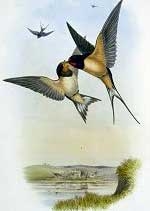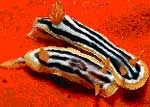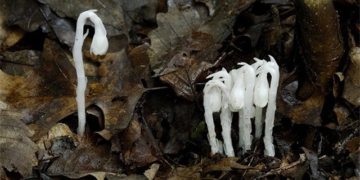The Hissar sheep is a rich source of food and contributes to soil ecosystem improvement due to its grazing behavior.
The Hissar breed is large, characterized by two fat deposits at the back, and is highly valued for its profitability and adaptability to climate change. They are increasingly popular in the Central Asian country of Tajikistan, which faces challenges due to a lack of meat and suitable grazing lands, AFP reported on April 28. “They gain weight quickly even with limited water and grass,” said Bakhtior Sharipov, a shepherd with a flock of about 250 sheep.

The Hissar sheep standing in the yard of a biotechnology center near Hissar town, western Tajikistan, on March 27, 2024. (Photo: AFP/Amir Isaev).
Amidst severe agricultural land degradation due to years of overgrazing and global warming, the resilient Hissar sheep provide benefits to Tajik farmers and a plentiful meat source for consumers. “The average weight of the flock is 135kg. It’s late winter now, so they aren’t very heavy, but they’ll gain weight quickly,” Sharipov said about his Hissar sheep. Meanwhile, the largest Hissar sheep can weigh over 210kg.
With the ability to produce meat and fat that accounts for about two-thirds of their total weight—more than most other sheep breeds, including those that require more expensive feed—the Hissar sheep can yield high profits for farmers.
“This is an exceptionally unique breed of sheep, primarily due to their weight. Additionally, they never stay in one place, which contributes to improving soil ecosystems,” explained Sharofzhon Rakhimov, a member of the Tajikistan Agricultural Science Institute. They can move up to 500km to find grazing areas between seasons, allowing pastures in different regions to regenerate.
Soil degradation is one of the major environmental challenges facing Central Asia. According to a United Nations report, about 20% of the region’s land is degraded, affecting 18 million people. This area is approximately 800,000km2, equivalent to the size of Turkey. Additionally, dust rising from the parched earth can cause cardiovascular and respiratory diseases.
As land continues to deteriorate and affect livelihoods, many farmers are opting to migrate. In such a context, the Hissar sheep, known for thriving in harsh conditions, is gaining particular attention in Tajikistan.
At a biotechnology center near the Tajik capital, scientist and breeder Ibrokhim Bobokalonov is sampling the genes of the best Hissar sheep in hopes of producing the largest sheep that yield the highest profits. Last year, a sheep weighing up to 230kg made an appearance at an agricultural competition in Kazakhstan, setting a Guinness World Record.
“The demand for Hissar sheep is increasing not only in Tajikistan but also in Kazakhstan, Kyrgyzstan, Russia, Turkey, Azerbaijan, China, and even the USA,” Bobokalonov noted.





















































